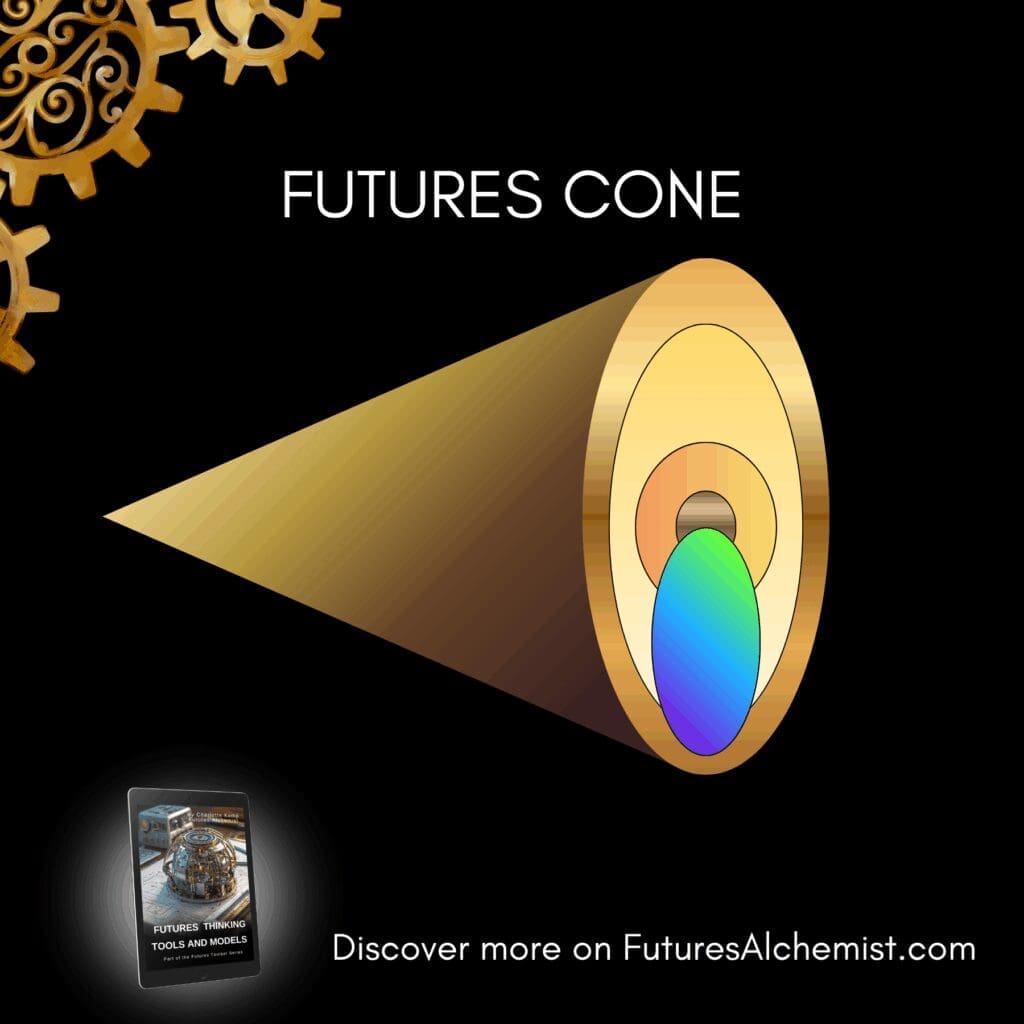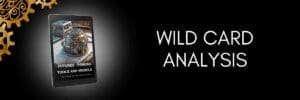
Introduction
The Futures Cone is a useful framework in futures thinking, used to illustrate the wide range of possible futures that extend outward from the present moment. It is a visual tool that helps people understand that the future is not a single destination, but a space of many potential outcomes.
What it is
The Cone is a diagram that widens outward from the present, forming a cone shape that represents increasing uncertainty over time.
Within the cone, futures are grouped into distinct categories:
Possible Futures
Everything that could happen, whether or not it’s likely. These are based on known science, imagination, or speculative thinking. This domain includes fringe ideas, wild cards, and science fiction scenarios.
Plausible Futures
What might happen based on current knowledge, trends, and expert understanding. These futures are grounded in research and systems thinking — not guaranteed, but credible. Most traditional strategic planning stays within this zone.
Probable Futures
What is likely to happen if current trends continue. These are the most forecast-driven futures — often considered default or business-as-usual outcomes. But they are not inevitable.
Preferable Futures
What we want to happen. These are normative or values-based futures — shaped by vision, ethics, and goals. They may or may not fall within the other categories, depending on how aligned our values are with current trajectories.

Some versions of the cone also include:
- Preposterous Futures — considered absurd or impossible by today’s standards (until they’re not).
- Projected Futures — the continuation of present trajectories with minimal change.
- Preventable Futures — what we want to avoid.
The Cone is not about predicting the future. It’s about exploring the range of potential futures and locating our assumptions, aspirations, and strategies within that spectrum.
Why It Works
The Futures Cone is powerful because it:
- Challenges linear thinking — showing that the future is a space, not a line.
- Expands perspective — encouraging exploration beyond the most probable or preferred options.
- Surfaces bias — by revealing which futures we ignore, overemphasise, or fear.
- Supports resilience and creativity — by acknowledging multiple pathways and preparing for a range of outcomes.
- Most importantly, it helps people see that no single future is inevitable. The future is shaped by choices, actions, systems, and values — and understanding that space helps us engage with it more consciously.
The Futures Cone is also important for demonstrating that the most important time to take action to change direction towards a more preferable future, is in the present moment. Leaving decisions until later means that we may be going in a different direction and a great deal of work would need to be done in order to bring us back on course to our preferred direction.
It is also useful as an exercise to unpack why we prefer one future to another. This can end up in a valuable exploration of shared values, ambitions and capabilities.
How to Use It
The Cone can be used as a discussion guide, a framing tool, or a scenario planning starting point. To apply it:
Choose a focal issue — a sector, challenge, or opportunity you want to explore.
Brainstorm futures across categories:
- What’s possible (even if unlikely)?
- What’s plausible, based on today’s data?
- What’s probable, if nothing changes?
- What’s preferable, according to your values and goals?
Plot ideas on the cone — visually place different futures to see patterns, gaps, or tensions.
Use as a foundation for further futures work — such as creating scenarios, developing strategy, or assessing risk.
The Cone can also be used as a self-awareness tool: Are you only planning for probable futures? Are your preferable futures also plausible? What possibilities are being overlooked?
When to Use It
- At the start of a foresight project, to define the landscape of futures thinking.
- In visioning workshops, to challenge assumptions and stimulate creativity.
- In scenario planning, to clarify what kind of futures are being explored.
- When guiding organisations from reactive to proactive strategy.
- The Cone also helps communicate futures thinking clearly to non-specialists — especially when paired with storytelling or visual aids.
In Summary
The Futures Cone is one of the most important tools in the foresight toolkit. It shows that the future is not fixed, and that the range of futures includes not just what will probably happen, but also what could, and should happen.
By helping us think broadly and strategically, the Cone gives us both the humility to know we can’t predict everything, and the agency to shape the future we prefer.
Origin
Originally developed by Joseph Voros, and based on earlier work by Herman Kahn and others, the Futures Cone provides a map of futures thinking territory, showing how the future can be categorised into types, from what might happen to what we want to happen.




